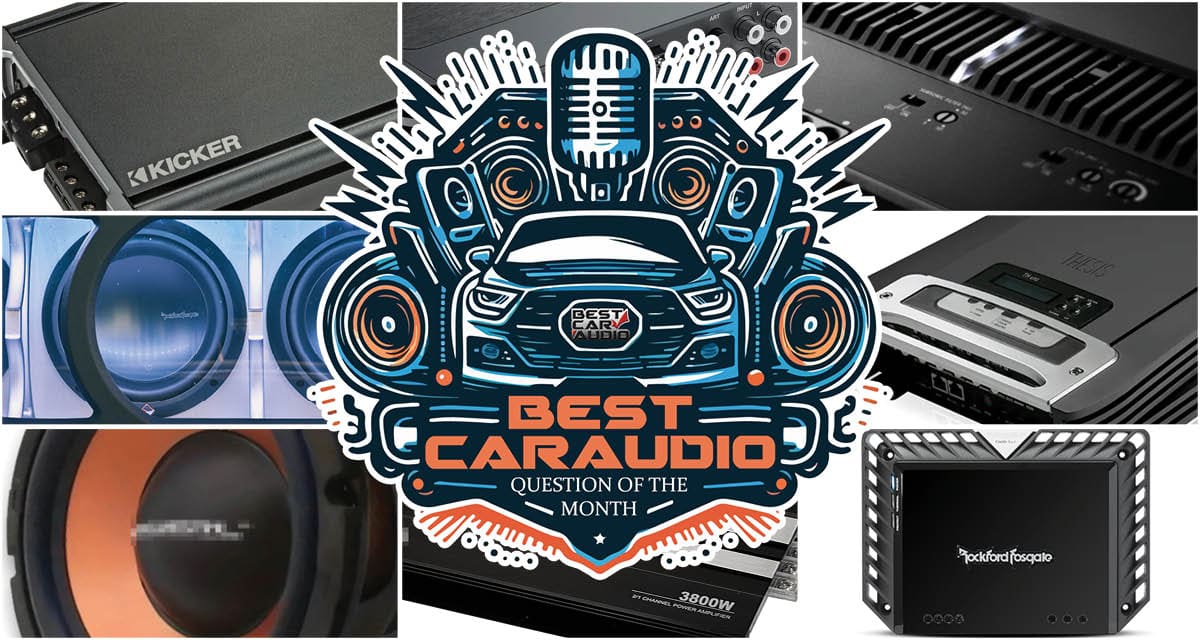This month’s car audio question asks what sub amp you should buy for a specific set of subwoofers. It seems like a pretty simple question, right? However, considering all the variables, the selection process gets impressively complicated. Let’s consider seven criteria when picking the best subwoofer amplifier for a specific set of subwoofers.
1. Subwoofer Power Ratings
We’ll put off talking about sub amp specifications, features and quality for a moment and consider the capabilities of the subwoofers in question. Let’s say you have a pair of 10-inch Rockford Fosgate T1D210 Power Series subwoofers. The pertinent information we need about the subwoofers is their impedance and continuous power handling rating.
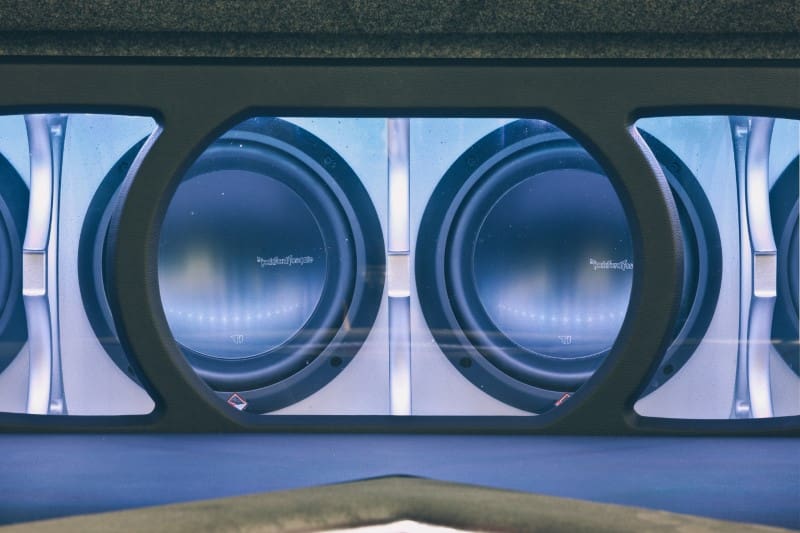
Regarding impedance, the drivers have dual two-ohm voice coils. Your installer can wire the subwoofers to present an amplifier with a two-ohm or 0.5-ohm load. We’ll pass on the 0.5-ohm configuration as it will result in more distortion and less efficiency from an amplifier.
Next, we need to consider power handling. Rockford Fosgate speakers and subwoofers comply with the ANSI/CTA-2031 Loudspeaker Standard. That standard references the ANSI/CTA-426-B R-2011 Loudspeaker, Optimum Amplifier standard for long term power handling. What this means to consumers is that the subwoofers in question can handle a pink noise track at a level equivalent to 600 watts for eight hours.
Bogus and Maximum Power Ratings
What if the subwoofers you want to pick an amp for don’t have CTA-2031-compliant specifications? If they are from a reputable company, then look for a continuous or RMS power rating. Never choose an amplifier based on a maximum, peak, or short-term subwoofer power rating.
If you have subwoofers purchased from one of those Internet companies, cross your fingers that the ratings are legit.
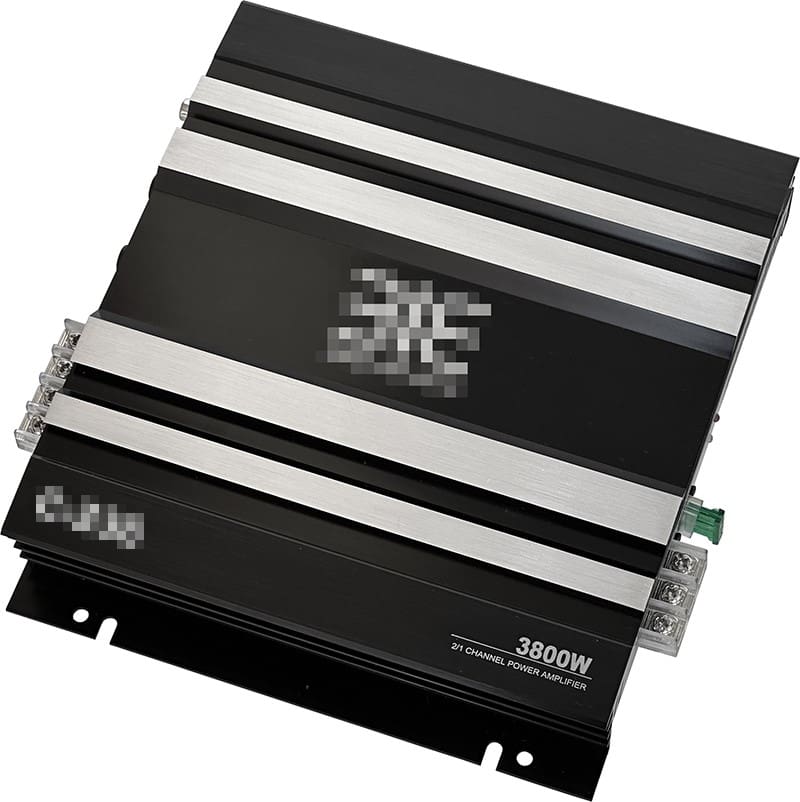
2. Amplifier Power Ratings
According to the Rockford Fosgate website specifications, each of these 10-inch subwoofers can handle up to 600 watts of power. If we want the most bass output possible, then we likely want an amplifier that produces no more than 1200 watts of power.
Now, we’ve entered the murky waters of sub amp power ratings. This is a whole new world if you thought speaker and subwoofer power handling was complicated and often inaccurate. We’ve measured amplifiers rated to produce just over 1000 watts that hit 1% THD+N around 600 watts. At the other end of the spectrum, we’ve seen 500-watt amps that can produce 50% more than they are rated for.
Adding to the complication is supply voltage. Car audio amplifiers are typically rated at 14.4 volts. However, if you have a large amplifier in a vehicle with a small alternator, inadequate wiring, or a bad ground connection, you will never see that voltage at the amp. This limits how much power the amp can produce without clipping and distortion. That 500-watt amp will likely produce 500 watts at the lower voltage. That 1,000-watt amp might only produce 500 watts before it distorts.
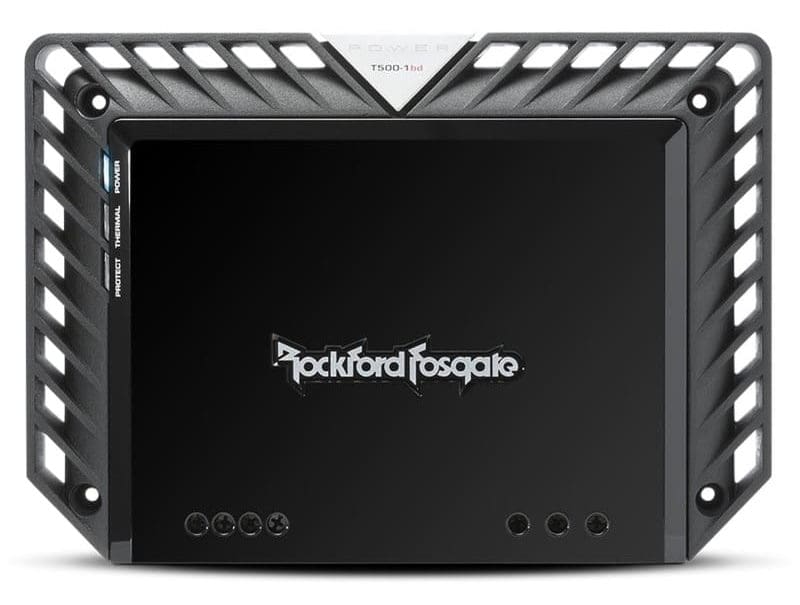
Power Doesn’t Matter Much
Here’s the reality behind amplifier power numbers. Whether you have 1200 or 900 watts doesn’t matter much unless you compete in sound pressure level contests. With a steady-state tone, the difference in system output between these two levels is theoretically only 1.25 dB SPL. With music, you are unlikely to hear that difference.
However, how much heat the subwoofer voice coils can handle matters. Twelve hundred watts, in this context, is 33% more heat. That’s a big jump. If the Rockford Fosgate subwoofers say they can handle 600 watts each, they can. For some mystery Internet brand, who knows? Unless you know the exact process the company uses to test their speakers’ and subwoofers’ power handling capabilities, you should be wary of pushing them to their thermal limits and expecting years of enjoyment.
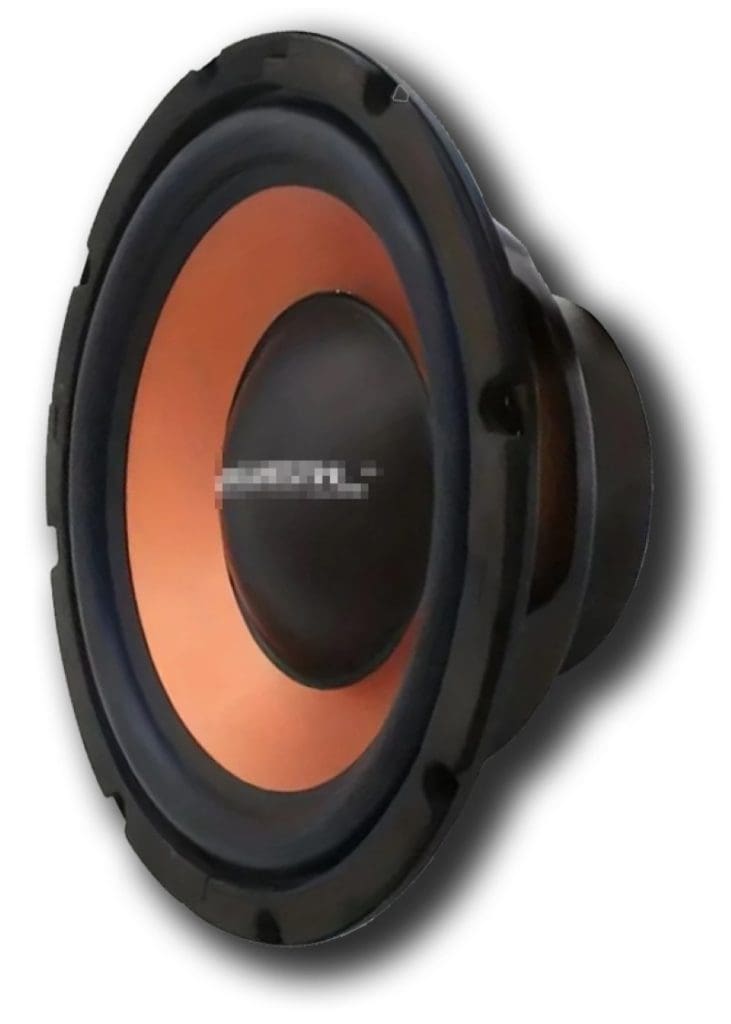
3. Load Impedance
We mentioned early on that the subwoofers we are working with will have a nominal impedance of two ohms. As such, we want an amplifier that can produce the power we want into that impedance. Most car audio subwoofer amps are designed to drive two- or one-ohm loads. We must look at the specifications carefully to ensure we get the best value.
For example, the KICKER CXA1200.1 sub amp is rated to produce 600 watts in a four-ohm load and 1200 watts in two or one-ohm loads. This would be an ideal solution for this application. We aren’t leaving any power on the table.
On the other hand, an amplifier that is rated for 400 watts into a four-ohm load, 700 watts into a two-ohm load, and 1000 watts into a one-ohm load wouldn’t be ideal. You would pay for a theoretical 300 watts of power you’d never have access to.
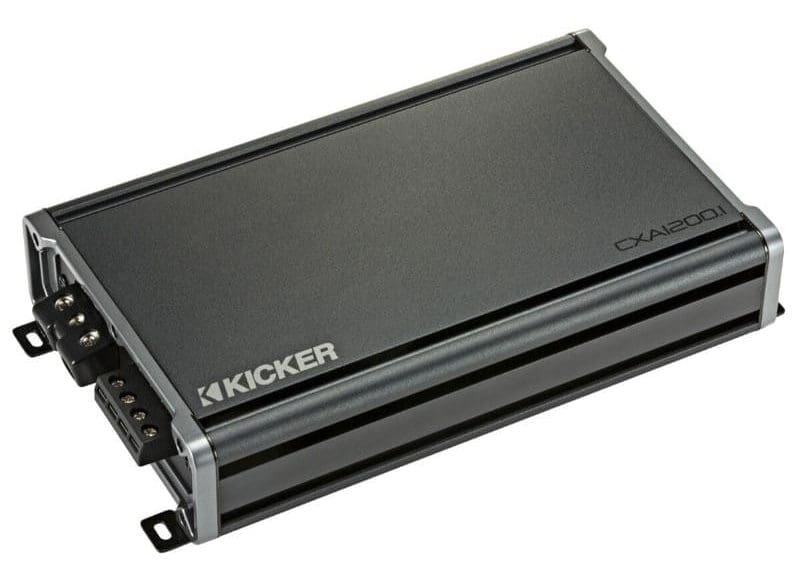
4. Amplifier Efficiency
To get the most power possible from a limited electrical system, you should pay close attention to amplifier efficiency specifications. That overrated amplifier we mentioned earlier is a great example. The ~1000-watt amp that made 600 watts was only 57.6% efficient when driving a one-ohm load and 68.7% efficient when driving a two-ohm load. By contrast, the Rockford Fosgate T500-1bdCP we tested was 74% efficient into a one-ohm load and 84% at two ohms.
Let’s convert those numbers into current draw measurements. Let’s say both amps are trying to produce 750 watts of power into a one-ohm load. The overrated amp would need to draw a hair over 100 amps of current, whereas the Rockford Fosgate would only need just under 78 amps. That’s a huge difference.
More importantly, that extra 22 amps of current will be converted into heat—an additional 288 watts of heat. This makes the chassis of the amp heat up much faster. To put it into perspective, the low-efficiency amp overheated in under two minutes. On the other hand, the Rockford Fosgate didn’t even shut off after an hour. Which would you rather have?
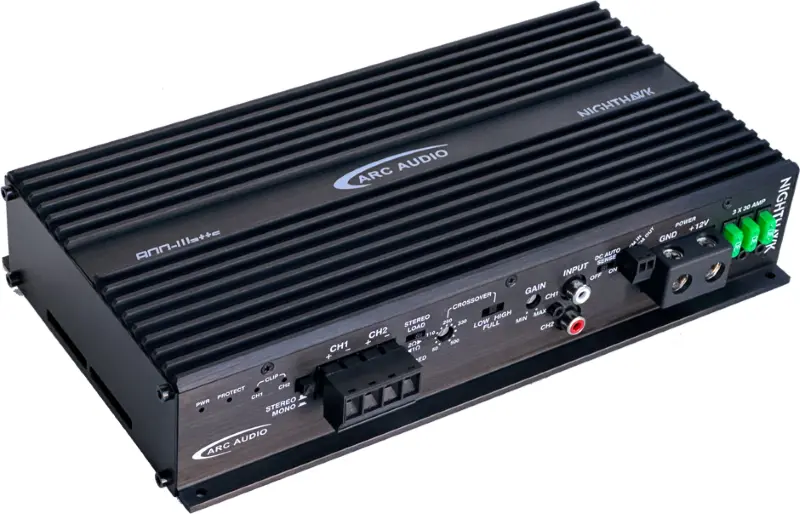
5. Sound Quality
One of the most nonsensical statements we hear is that distortion in bass frequencies doesn’t matter. We agree that they are harder to detect than in midrange frequencies, but they still color and unbalance our music. A bigger problem is that harmonic distortion in bass frequencies adds midbass content. If the subwoofer is installed behind you, distortion makes it easier to localize or detect where the sound is coming from. Many Autosound competitors are putting massive efforts into installing subwoofers in the front of their vehicles. They are better off using subwoofers and amplifiers that add less distortion.
If you want the bass produced by your car audio system to be tight and controlled, you should start by picking a subwoofer that operates very linearly. The next step is to power it with a sub amp that doesn’t add a lot of distortion.
Look at the Hertz line of car audio products. Their HCP 1DK makes 1240 watts of power with a specified 0.25% THD. The new Dieci DP 1.500 makes 590 watts into a 2-ohm load at a rated 0.2% THD. Stepping up, they have the Mille amplifiers. The ML Power 1 makes 1000 watts of power, but with 0.08% THD. Ignore the power ratings and look at the improvements in distortion performance. The jump from around 0.2 to 0.08 is massive.
This is why companies have different amplifier series. Higher-end models typically have better distortion numbers.
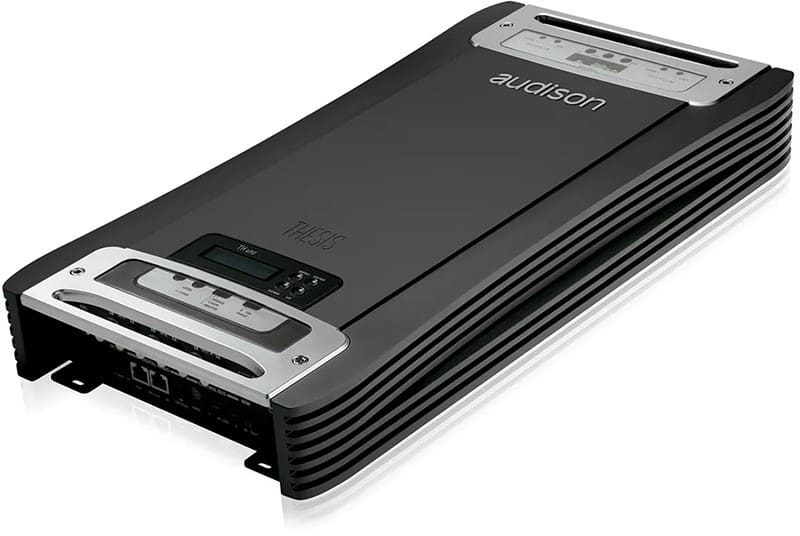
6. Sub Amp Features
At a fundamental level, the amp you choose should have features that improve audio system performance or make it easier to use. Many amps include or have the option for remote level control. This is a must-have if you want a lot of bass when out on a cruise and then turn it down when you want background music levels.
Features like a steep 24-dB/octave crossover can help reduce localization, making the subwoofer blend with the rest of the system better. An adjustable infrasonic filter can protect the sub from excursion-based damage when used in a ported enclosure. A bit of equalization in the form of a bass boost control can add some impact from a small sealed enclosure. All these features matter in terms of how your system sounds.
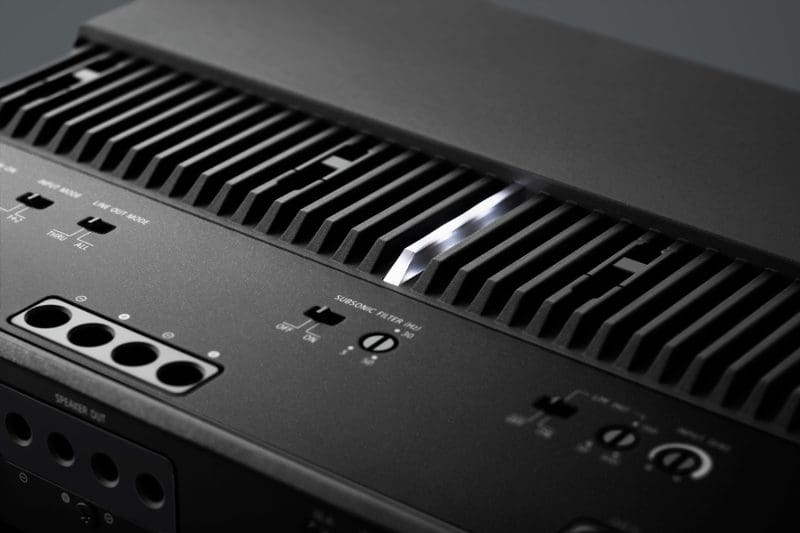
7. System Configuration and Calibration
If your car audio system is configured correctly, it should be capable of delivering whatever the amp can produce to the subwoofers when the radio is set to its maximum level. If there are level-matching issues or someone configures the system with too much gain overlap, you can likely push the amplifier well beyond where it will clip.
The problem is that an amplifier will make much more than its rated power. It would sound terrible, but that seems to have never stopped anyone. Say we have an amp rated to produce 1,000 watts of power at 1% THD+N at whatever voltage we can supply. If we push the amp harder, it will easily make 1500-1600 watts of power. It’s not linear and doesn’t sound good doing it. However, power is power. The subwoofer doesn’t know or care about the frequencies it receives. It just gets hotter and hotter based on the energy sent to it.
So, to summarize, an amplifier that doesn’t include a limiter circuit can easily produce 50% more power than it’s rated for. This is enough to damage a subwoofer if the total power exceeds the continuous power rating.
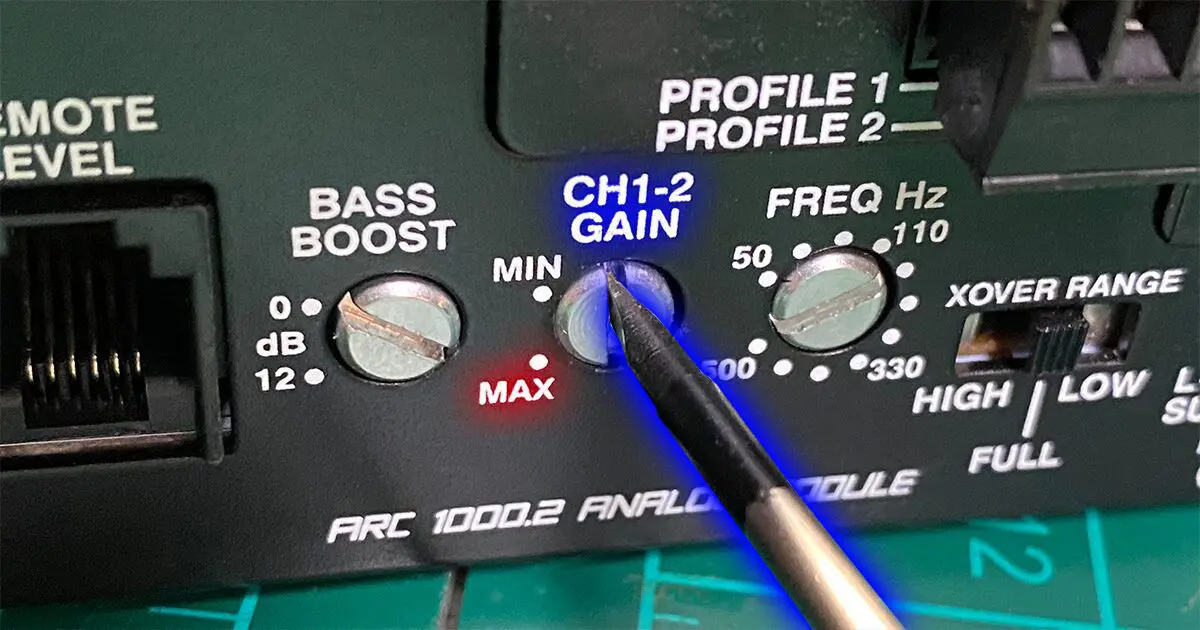
Picking the Perfect Sub Amp
So, how would we pick an ideal sub ampl for our pair of 10-inch subwoofers? As mentioned, something name-brand that can deliver about 1,000 watts of power into a two-ohm load would be where we’d start. We’d make sure the specifications on the amp are stated to comply with the ANSI/CTA-2006-D standard or at least use the same qualifications. We would look at the distortion and efficiency specifications carefully. We’d ask the retailer we are working with about the warranty. Here, you want something that has at least a two-year warranty.
Crucially, we would want the amp configured to turn the volume on the radio up without worrying about over-driving the speakers. Modern music is recorded quite loud, so there is little need for large amounts of gain overlap. Maybe a few dB is required if we listen to classic rock or something with a wide dynamic range. Certainly, 10 dB is unsuitable, making it easy to over-drive the amp and damage the subwoofers.
As you can see, picking a suitable amp isn’t as easy as choosing a power level. Even if that’s all that mattered, obtaining accurate information is difficult. When it’s time to pick a sub amp to work with your subwoofers, visit a local mobile enhancement retailer to find a solution that will sound great and function reliably for many years.
